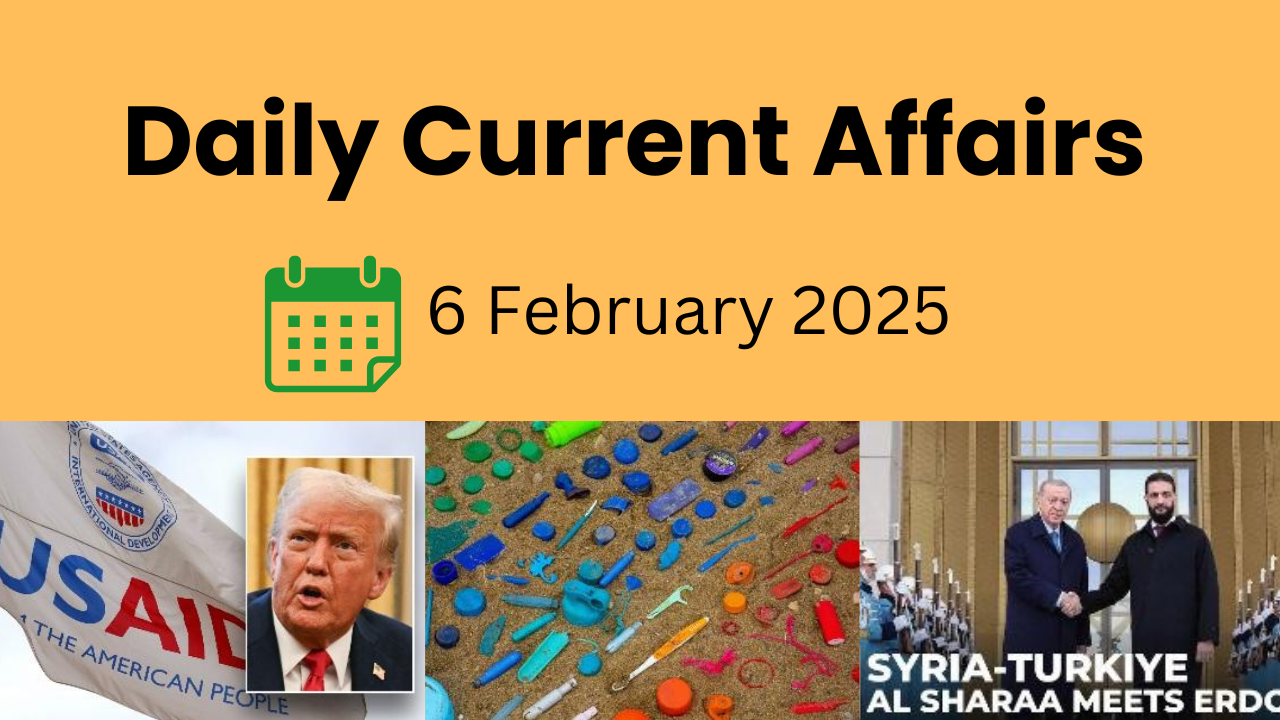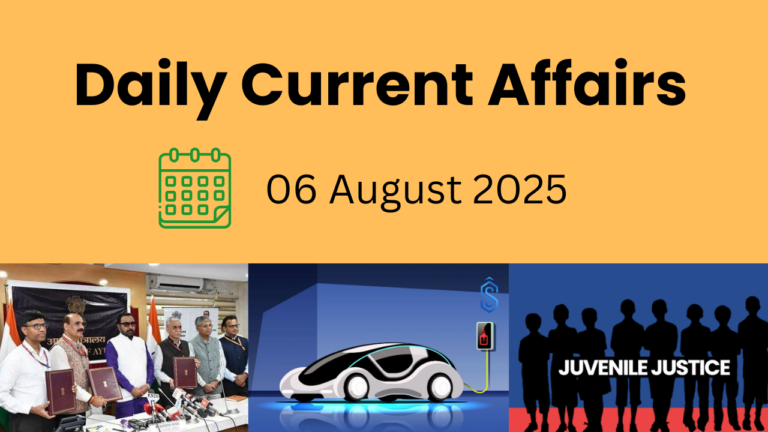1. The Future of USAID: Global Implications and Potential Shutdown
Context: The United States Agency for International Development (USAID) faces an uncertain future as the Trump administration considers merging it with the U.S. Department of State. This move would involve major funding cuts and a possible downsizing of USAID’s workforce, raising concerns about the future of U.S. humanitarian aid and its global impact.
What is USAID? Understanding Its Role and Importance
Origins and Mission:
Established in the 1960s under the Foreign Assistance Act of 1961, USAID is legally mandated by Congress to oversee and administer U.S. international aid programs.
Key Areas of Focus:
Operating in over 60 countries with a workforce of nearly 10,000 personnel, USAID plays a vital role in:
- Food Security – Provides famine relief and operates an advanced food shortage prediction system.
- Healthcare – Funds vaccination programs, pandemic prevention, and global disease control efforts.
- Infrastructure & Development – Supports clean water initiatives, disaster relief, and economic growth programs.
- Humanitarian Assistance – Aids war-affected regions such as Ukraine and sub-Saharan Africa.
USAID’s Budget and Global Spending:
The U.S. remains the world’s largest donor, allocating $68 billion to international aid in 2023. USAID received the largest share—$40 billion—most of which was directed toward Asia, Africa, and Europe, particularly Ukraine.
In comparison, the U.K. and other global powers spend significantly less on international aid, highlighting the U.S.’s dominant role in global humanitarian efforts.
Why is the Trump Administration Targeting USAID?
Criticism of Foreign Aid Spending:
- Donald Trump has long criticized foreign aid, claiming it wastes U.S. taxpayer money. He issued an executive order pausing international spending for 90 days, causing multiple aid programs to be suspended.
- Public Opinion – Polls show that many American voters favor reducing foreign aid, aligning with Trump’s stance.
- Elon Musk’s Influence – A key Trump advisor, Musk has pushed for drastic spending cuts, leading to tensions between USAID and the administration.
Consequences of the Spending Freeze:
- Critical programs, such as medical aid and clean water initiatives, faced immediate disruptions.
- Security concerns arose when reports suggested that prison guards in Syria, responsible for detaining Islamic State militants, nearly abandoned their posts due to funding shortages.
- International humanitarian organizations described the spending freeze as a severe disruption to global aid efforts.
Can the U.S. President Unilaterally Shut Down USAID?
Although the Trump administration is considering dismantling USAID, completely shutting it down would require congressional approval.
A possible alternative would be to merge USAID with the State Department, similar to how the U.K. integrated its international aid department with the Foreign Office in 2020. This restructuring would limit USAID’s independence while keeping some aid functions intact.
What Would Be the Global Impact of USAID’s Closure?
Humanitarian Consequences:
- Critical aid programs, such as mine clearance, pandemic response, and prosthetic aid for war victims, would be at risk.
- Millions of vulnerable populations rely on USAID funding for healthcare, food security, and disaster relief.
Foreign Policy Implications:
- Critics argue that reducing U.S. foreign aid would weaken American global influence and harm diplomatic relationships.
- Countries that depend on U.S. assistance could turn to other global powers for aid, altering global alliances.
Security Risks:
- USAID funding plays a role in stabilizing conflict zones—its removal could lead to greater instability and security threats.
- Counterterrorism efforts may be undermined, especially in regions where USAID supports governance and development programs.
Geopolitical Shifts:
- A weakened U.S. aid presence could create an opportunity for China to expand its global influence by offering alternative development projects and investments.
Conclusion:
The proposed restructuring or closure of USAID marks a major shift in U.S. foreign policy, aligning with Trump’s “America First” strategy. While supporters argue that reducing foreign aid saves taxpayer money, critics warn that such a move could have severe humanitarian, diplomatic, and security consequences.
2. Beggar-Thy-Neighbour Policies: A Growing Threat to Global Trade
Context: The term “Beggar-Thy-Neighbour” has resurfaced as a major concern amid rising trade tensions and currency devaluations, particularly between economic giants like the United States and China. These policies, aimed at boosting domestic economies, often come at the expense of other nations, triggering trade wars and economic instability.
What Are Beggar-Thy-Neighbour Policies?
Beggar-thy-neighbour policies refer to protectionist economic strategies that benefit one nation while harming others. These policies typically include:
- High Tariffs – Imposing taxes on imported goods to protect domestic industries.
- Strict Import Quotas – Limiting the number of foreign products allowed in the market.
- Currency Devaluation – Weakening the domestic currency to make exports cheaper and imports more expensive.
While these measures may provide short-term benefits to domestic industries, critics warn that they can cripple international trade, leading to economic slowdowns, as seen during the Great Depression.
How Do These Policies Work?
Governments adopt beggar-thy-neighbour policies to shield local industries from foreign competition. However, these actions often provoke economic retaliation from other countries, creating a dangerous cycle of protectionism.
Key Examples:
- Trade Barriers – Nations impose high tariffs and import restrictions, making foreign goods more expensive.
- Currency Manipulation – Countries deliberately weaken their currency to boost exports and discourage imports, causing trade imbalances.
Historical Origins:
The term was first introduced by Scottish economist Adam Smith in his 1776 book, “The Wealth of Nations.”
Smith criticized mercantilist policies, arguing that free trade benefits all nations, while protectionism leads to long-term economic decline.
Arguments in Favor of These Policies:
Protecting Domestic Industries & Jobs:
- Governments often shield key industries to preserve jobs and ensure national security.
- New industries may require temporary protection to become competitive in the global market.
Boosting Exports Through Currency Devaluation:
- A weaker domestic currency makes exports cheaper and more competitive, leading to a trade surplus.
- Higher exports and lower imports can strengthen the national economy.
Criticism & Global Consequences:
Trade Wars & Economic Retaliation:
- Tit-for-tat tariffs often escalate into full-blown trade wars, reducing global trade and economic growth.
- The interwar period (1918-1939) saw widespread protectionist policies, worsening the Great Depression.
Recent Examples of Protectionism:
- China & Japan have been accused of currency devaluation to maintain their trade surpluses.
- The U.S.-China Trade War (2018-2020) involved heavy tariffs, disrupting global markets.
Impact on Consumers
Higher Prices for Goods:
- Tariffs on imports raise the cost of foreign goods, increasing consumer expenses.
- Example: U.S. tariffs on Chinese products helped American manufacturers but raised prices for American consumers.
Reduced Purchasing Power:
- Currency devaluations may boost exports, but they also weaken purchasing power, making domestic goods more expensive.
An Alternative Approach: Unilateral Free Trade
Avoiding Retaliatory Tariffs:
Some economists argue that imposing tariffs harms domestic consumers more than it helps.
- Example: If the U.S. imposes tariffs on Chinese goods, China retaliating with its own tariffs will further harm its own consumers.
The Free Trade Advantage:
- Free trade advocates believe that one country can benefit by avoiding retaliatory tariffs, allowing it to profit from another nation’s protectionist mistakes.
Conclusion:
Beggar-thy-neighbour policies may seem beneficial for a country in the short run, but they threaten global economic stability in the long term. Trade wars, rising prices, and reduced global cooperation are just some of the negative consequences.
3. Home Ministry’s Directive: Preventing the Misuse of the State Emblem of India
Context: The Union Home Ministry has directed State Governments to take strict measures to prevent the misuse and improper depiction of the State Emblem of India. The Ministry emphasized that the Lion Capital emblem is incomplete without the national motto, “Satyameva Jayate” written in Devanagari script.
Concerns Raised by the Government:
Incorrect Use of the Emblem:
- Many government agencies display the State Emblem on official documents, seals, vehicles, buildings, and websites without including the motto “Satyameva Jayate.”
- Such an incomplete representation does not conform to Appendix I & II of the Schedule under the State Emblem of India (Prohibition of Improper Use) Act, 2005.
- Violating these guidelines amounts to a legal offense.
What is the State Emblem of India?
The State Emblem of India is the official seal of the Government of India, adapted from the Sarnath Lion Capital of Emperor Ashoka.
Key Features of the Emblem:
- Three lions standing on an abacus (the fourth lion is hidden from view).
- A Dharma Chakra (Wheel of Law) at the center of the abacus.
- A bull on the right and a galloping horse on the left of the Dharma Chakra.
- Smaller Dharma Chakras on the extreme right and left.
- The national motto “Satyameva Jayate” written in Devanagari script below the emblem.
Misuse by Unauthorized Individuals and Organizations:
- Many unauthorized individuals and authorities illegally use the State Emblem on their stationery, vehicles, and websites.
- The State Emblem of India is reserved only for specific government authorities as per:
- The State Emblem of India (Prohibition of Improper Use) Act, 2005.
- The State Emblem of India (Regulation of Use) Rules, 2007.
Strict Action Against Misuse:
Legal Consequences for Violators:
- Officials responsible for the incomplete display of the emblem will face action.
- Unauthorized individuals and organizations using the emblem illegally will be penalized.
- Punishment includes:
- Imprisonment of up to 2 years.
- A fine of up to 5,000.
- Or both.
- Falsely claiming the right to use the emblem is also a punishable offense.
Government’s Authority to Enforce the Law:
- The Central Government holds the authority to frame rules, regulate use, and impose restrictions on the State Emblem of India.
- The government can seize or confiscate any unauthorized usage of the emblem.
Conclusion:
The State Emblem of India is a symbol of national dignity and sovereignty. The Home Ministry’s directive ensures that it is used responsibly and displayed correctly. By enforcing strict laws and punishments for misuse, the government aims to protect the integrity of this national symbol and uphold legal compliance.
4. Supreme Court to Assam: Deport Foreigners, Don’t Detain Them Indefinitely
Context: On February 4, 2025, the Supreme Court of India strongly criticized the Assam government for keeping foreigners in detention camps indefinitely instead of deporting them. The court emphasized that individuals declared as foreigners should not be detained for eternity and urged authorities to resolve nationality verification and deportation issues effectively.
Nationality Verification Crisis:
- The Assam government revealed that nationality verification forms had not been sent to the Ministry of External Affairs due to a lack of proper addresses of the detainees in their native country.
- This has resulted in foreigners being stuck in detention centers for over a decade, making them effectively stateless individuals.
Supreme Court’s Directives to the Centre and State:
- The Union Government was ordered to clarify how cases involving individuals with unknown nationality are being handled.
- The Centre must submit a detailed report listing:
- The number of declared foreigners.
- The total number of deportations so far.
- The Assam government was asked to file a proper affidavit detailing the steps taken for compliance with the court’s directives.
Challenges in the Deportation Process:
- India and Bangladesh have been unable to resolve the issue of repatriation.
- India claims these individuals are not Indian citizens, while Bangladesh refuses to accept them, leaving them stateless.
- As a result, some foreigners have remained in detention for over 10 years with no resolution in sight.
Monitoring of Detention Camps:
- The Supreme Court instructed the Assam State Legal Services Authority to conduct surprise inspections at the Matia transit camp for foreigners.
- The purpose of these visits is to:
- Ensure proper hygiene.
- Check food quality provided to detainees.
- The court reiterated that Article 21 of the Indian Constitution guarantees the right to life and personal liberty to all individuals, including foreigners.
Understanding Foreigners Tribunals (FTs):
Foreigners Tribunals (FTs) are quasi-judicial bodies set up under the Foreigners (Tribunals) Order, 1964, framed under Section 3 of the Foreigners Act, 1946.
Functions of FTs::
- They determine the citizenship status of individuals suspected to be foreigners.
- They handle cases referred by local authorities.
Foreigners (Tribunals) Order, 2019 – Key Amendments:
- Outlines the procedure for appeals against National Register of Citizens (NRC) decisions.
- Empowers District Magistrates across India to establish Foreigners Tribunals.
- Although the law applies nationwide, FTs currently operate only in Assam.
Structure of a Foreigners Tribunal:
- Each FT is led by a judge, advocate, or civil servant with judicial experience.
- Appointments are made based on government guidelines under the Foreigners Tribunal Act, 1941 and the Foreigners Tribunal Order, 1964.
Powers and Responsibilities of FTs:
- FTs function with civil court powers, including:
- Issuing summons.
- Examining documents.
- Notices must be served within 10 days of receiving a reference.
- Cases must be decided within 60 days.
- Under Section 9 of the Foreigners Act, 1946, the burden of proof lies on the individual to establish their Indian citizenship.
- If unable to prove their nationality, individuals may be sent to detention centers for deportation.
Appeal and Review Process:
- A review application can be filed within 30 days of the FT’s order.
- Adverse decisions can be challenged in the High Court, and if necessary, further appealed in the Supreme Court.
Conclusion:
The Supreme Court’s directive serves as a strong reminder that foreigners must be deported, not detained indefinitely. The failure to verify nationality has left many individuals stateless, creating a humanitarian and legal crisis. The court’s intervention aims to push the government towards finding a just and efficient solution while ensuring that fundamental rights are upheld.
5. Turkey-Syria Talks: Kurdish Fighters and Defense Agreements Take Center Stage
Context: In a major diplomatic development, Turkish President Recep Tayyip Erdogan met with Syria’s interim President Ahmed al-Sharaa in Ankara. This meeting marks a significant shift in Turkey-Syria relations, focusing on security concerns and potential defense agreements.
This was al-Sharaa’s second international visit since taking office, following discussions with Saudi Arabia’s Crown Prince Mohammed bin Salman.
Key Points from the Meeting:
- The two leaders discussed strengthening security cooperation, particularly against Kurdish fighters in northeastern Syria and the Islamic State (ISIS/ISIL).
- Erdogan reaffirmed Turkey’s support for Syria’s anti-terror efforts, specifically against groups like ISIS and the Kurdistan Workers’ Party (PKK), which Turkey classifies as a terrorist organization.
- Turkey is considering establishing additional military bases in Syria as part of a new defense agreement between the two nations.
- Al-Sharaa opposed Kurdish self-rule and demanded the disarmament of the Syrian Democratic Forces (SDF), signaling Syria’s commitment to maintaining territorial integrity.
Ongoing Turkey-Syria Tensions:
- The Turkey-Syria border stretches 909 kilometers, from the Mediterranean Sea in the west to Iraq in the east.
- A key source of friction is the presence of Kurdish militant groups in northern Syria.
- The Kurdistan Workers’ Party (PKK) has been engaged in an insurgency against Turkey since the 1980s and is designated as a terrorist group by Turkey.
- The Kurds, a major ethnic group in the Middle East, are spread across Turkey, Syria, Iraq, Iran, and Armenia and have long sought an independent state, Kurdistan.
- The Syrian Democratic Forces (SDF), a Kurdish-led militia, was a key U.S. ally against ISIS, but Turkey views the group as an extension of the PKK, raising concerns over its growing influence near Turkey’s borders.
What’s Next?
The Turkey-Syria security discussions could reshape regional power dynamics, with potential military agreements and anti-terror measures affecting not just these two countries, but also the broader Middle East conflict. The fate of the SDF and Kurdish groups remains uncertain as Turkey and Syria push for stronger territorial control.
6. Harnessing Bacteria to Combat Plastic Waste: Potential and Challenges
Context: The global plastic waste crisis has prompted scientists to explore innovative biological solutions using bacteria and enzymes to break down plastics.
Numerous research institutions and companies are actively working to develop and commercialize these technologies. However, scalability, efficiency, and industry acceptance remain significant hurdles.
Why is Plastic Waste a Problem?
- Plastics take centuries to degrade, causing long-term environmental damage.
- In the last 65 years, an estimated 8.3 billion tonnes of plastic have been produced.
- Less than 10% has been recycled, while approximately 4.9 billion tonnes continue to pollute the environment.
Biological Approaches to Plastic Degradation:
1. Enzyme-Based Degradation:
- Scientists have developed engineered enzymes to break down PET (Polyethylene Terephthalate), a common plastic used in bottles and packaging.
- In 2016, Kōhei Oda’s team discovered IsPETase, an enzyme capable of degrading PET, though at a slow rate.
- Recent advancements have led to engineered enzymes that can degrade 90% of PET in just 17 hours, breaking it down into reusable components like terephthalic acid and ethylene glycol.
Challenges:
- Enhancing the speed and efficiency of enzymatic degradation.
- Reducing costs for large-scale industrial applications.
2. Microbial Degradation: Bacteria That Eat Plastic:
- Scientists are exploring bacteria that consume plastics as an energy source.
- Example: A bacterium known as X-32 can break down plastics into carbon dioxide (CO₂), water, and biomass—but takes around 22 months to do so.
Key Process:
- Bacteria attach to the plastic surface.
- They use the plastic as a carbon source for energy.
- They release enzymes that break down the polymer structure.
Challenges:
- Slow degradation rates compared to enzymatic solutions.
- Requires further optimization for industrial use.
3. Spore-Based Biodegradable Plastic: A Revolutionary Approach:
- Scientists at Harvard University and the Wyss Institute have developed a bacteria-infused thermoplastic that degrades naturally.
- The technology uses heat-resistant bacterial spores (Bacillus subtilis) embedded in plastic.
- These spores remain inactive during use but activate in composting conditions, accelerating plastic breakdown.
Advantages:
✔ Increases plastic durability while in use.
✔ Speeds up decomposition in composting environments.
✔ Offers a potentially industry-friendly alternative.
Challenges:
- Requires regulatory approval for use in consumer products.
- Scaling up spore purification for mass production remains difficult.
Bringing These Solutions to the Industry:
- Companies and researchers are working to make bacteria- and enzyme-based plastic degradation commercially viable.
- Notable examples include:
- Carbios (France): Developed a PET-digesting enzyme that breaks down plastic in just 10 hours.
- North Carolina-based biomaterial firms: Experimenting with spore-infused thermoplastics to enhance biodegradability.
Major Hurdles for Industrial Adoption:
- Improving degradation efficiency to match industry demands.
- Lowering the cost of enzyme production and bacterial processing.
- Encouraging manufacturers to integrate these solutions into existing production models.
Conclusion: The Future of Bacteria in Plastic Waste Management
While bacteria and enzymes present a game-changing opportunity to tackle plastic pollution, their success depends on overcoming challenges in scalability, efficiency, and industry adoption.
Future research should focus on optimizing enzymatic reactions, advancing microbial degradation techniques, and ensuring cost-effective commercial application.




